
Makalu Base Camp: The Gateway to Untouched Wilderness
Discover the untouched wilderness of Makalu Base Camp, where breathtaking landscapes and unique biodiversity await in the heart of the Himalayas.
Nestled in the heart of the Himalayas, Makalu Base Camp offers an unparalleled experience for adventure enthusiasts. At an elevation of over 5,000 meters, it provides breathtaking views of Makalu, the world's fifth highest mountain. The journey to the base camp takes you through some of the most pristine and untouched landscapes in Nepal, including dense forests, high-altitude meadows, and glacier valleys. The trek is challenging but rewarding, with opportunities to witness rare flora and fauna, including the elusive snow leopard and red panda. Makalu Barun National Park, which encompasses the base camp, is a treasure trove of biodiversity and natural beauty. The region is also home to diverse ethnic communities, providing a unique cultural experience to trekkers. Whether you're an avid mountaineer or a nature lover, Makalu Base Camp promises an unforgettable adventure. The isolation and rugged terrain make it a true wilderness experience, far removed from the more crowded trekking routes of Nepal. Prepare to be awed by the majestic peaks, serene landscapes, and the sheer remoteness of this incredible destination.
Local tips in Makalu Base Camp
- Best time to visit is from late September to early December and from late March to early June when the weather is stable and clear.
- Ensure you have a good level of physical fitness as the trek is quite challenging with steep ascents and high altitudes.
- Carry sufficient warm clothing and a high-quality sleeping bag as temperatures can drop significantly, especially at night.
- Acclimatization is crucial; take your time ascending and consider including rest days to avoid altitude sickness.
- Pack enough water purification tablets and snacks, as supplies can be limited in more remote sections of the trek.
- Hiring a local guide or joining a trekking group can enhance your experience and provide additional safety.
Makalu Base Camp: The Gateway to Untouched Wilderness
Nestled in the heart of the Himalayas, Makalu Base Camp offers an unparalleled experience for adventure enthusiasts. At an elevation of over 5,000 meters, it provides breathtaking views of Makalu, the world's fifth highest mountain. The journey to the base camp takes you through some of the most pristine and untouched landscapes in Nepal, including dense forests, high-altitude meadows, and glacier valleys. The trek is challenging but rewarding, with opportunities to witness rare flora and fauna, including the elusive snow leopard and red panda. Makalu Barun National Park, which encompasses the base camp, is a treasure trove of biodiversity and natural beauty. The region is also home to diverse ethnic communities, providing a unique cultural experience to trekkers. Whether you're an avid mountaineer or a nature lover, Makalu Base Camp promises an unforgettable adventure. The isolation and rugged terrain make it a true wilderness experience, far removed from the more crowded trekking routes of Nepal. Prepare to be awed by the majestic peaks, serene landscapes, and the sheer remoteness of this incredible destination.
When is the best time to go to Makalu Base Camp?
Iconic landmarks you can’t miss
Gorak Shep
Experience the breathtaking beauty of Gorak Shep, the last stop before Everest Base Camp, where adventure meets serene mountain landscapes.
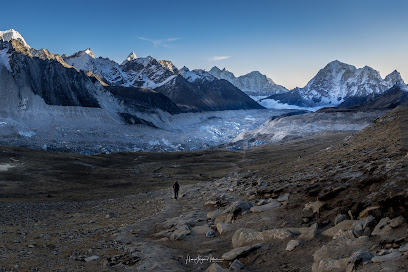
Makalu Barun National Park
Explore the stunning Makalu Barun National Park - a paradise of towering peaks, rich biodiversity, and vibrant local culture in Nepal's Himalayas.
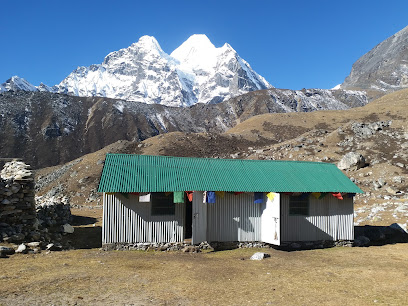
Kala Patthar Summit
Experience the breathtaking views of Mount Everest at the iconic Kala Patthar Summit, a must-visit for every trekking enthusiast in Nepal.
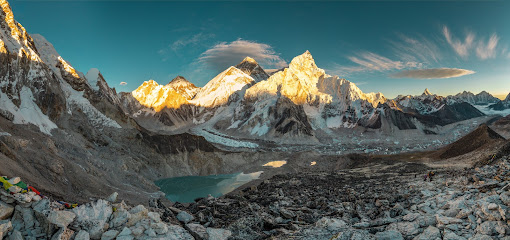
Manaslu Trekking Area
Explore the enchanting Manaslu Trekking Area, a breathtaking national reserve in the Himalayas, perfect for adventure seekers and nature lovers.
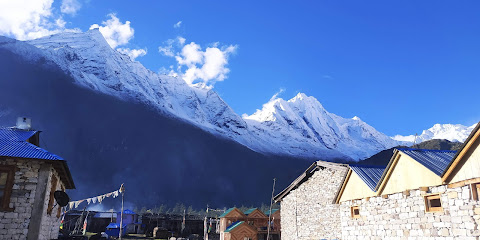
Everest Base Camp Trek
Experience the awe-inspiring Everest Base Camp Trek, a breathtaking journey through the heart of the Himalayas with stunning views and rich cultural encounters.
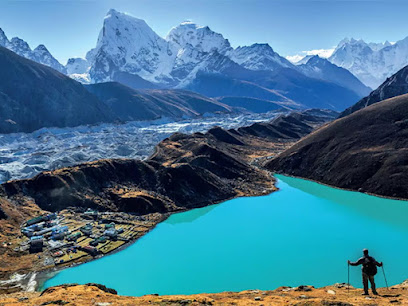
Kongma La Pass
Experience the breathtaking beauty of Kongma La Pass, a must-visit hiking area in the heart of the majestic Himalayas.
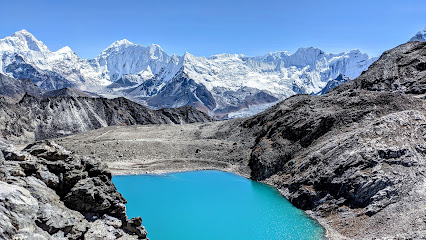
Makalu Adventure Pvt. Ltd
Unleash your adventurous spirit with Makalu Adventure Pvt. Ltd, your expert tour operator for trekking and thrilling experiences in the heart of Nepal.
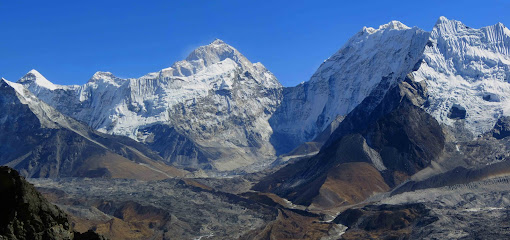
Kanchenjunga Base Camp Trek
Explore the breathtaking landscapes and rich culture of the Kanchenjunga Base Camp Trek, a must-visit destination for adventure enthusiasts.
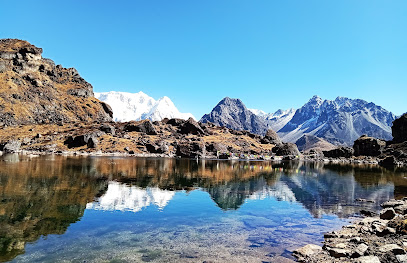
Makalu Base Camp ( Barun Valley )
Explore the breathtaking Makalu Base Camp in Barun Valley, a premier hiking area offering stunning views and rich biodiversity in the heart of the Himalayas.
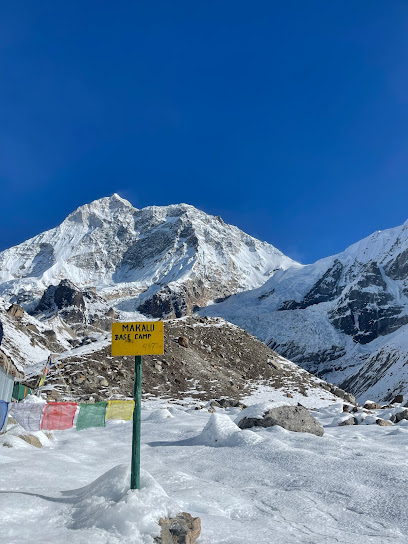
Makalu Base Camp Trekking
Explore the breathtaking Makalu Base Camp Trek, where stunning landscapes meet rich Himalayan culture in an unforgettable trekking adventure.
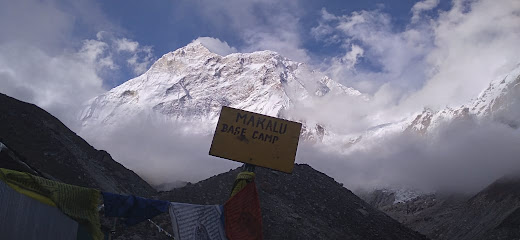
Makalu base camp trek
Discover the breathtaking beauty of the Makalu Base Camp Trek, a Himalayan adventure filled with stunning landscapes and rich cultural experiences.
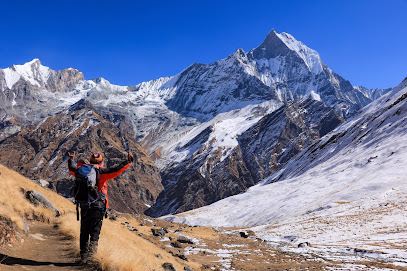
Unmissable attractions to see
Chitwan National Park
Explore Chitwan National Park: A UNESCO World Heritage Site teeming with wildlife, lush landscapes, and cultural experiences in the heart of Nepal.
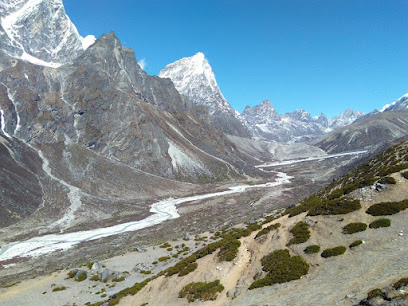
Namobuddha Monastery
Explore the serene beauty and spiritual richness of Namobuddha Monastery, a must-visit destination for those seeking peace in the Himalayas.
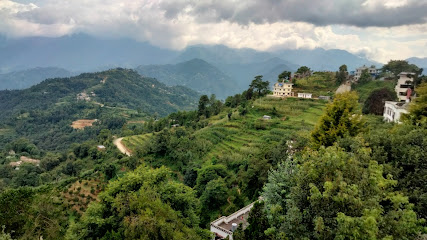
Gorak Shep
Discover the breathtaking beauty of Gorak Shep, the gateway to Everest Base Camp, where adventure meets stunning Himalayan landscapes.
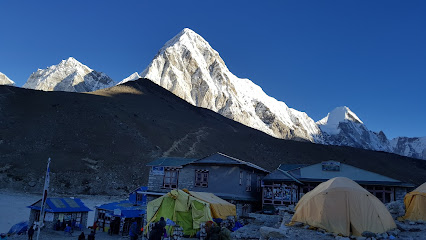
Makalu Barun National Park
Explore the breathtaking landscapes and diverse wildlife of Makalu Barun National Park, a stunning gem in the heart of Nepal's Himalayas.
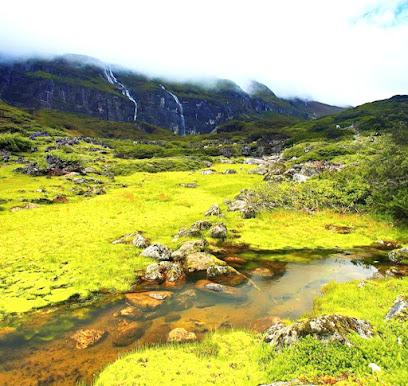
Thorong La
Experience the breathtaking heights of Thorong La, one of the world's highest mountain passes, and immerse yourself in the beauty of the Annapurna region.
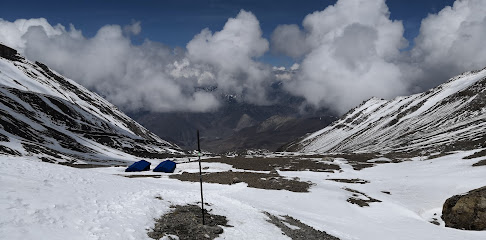
Makalu
Discover the breathtaking beauty of Makalu, the fifth highest mountain in the world, and embark on an unforgettable trekking adventure through the Himalayas.
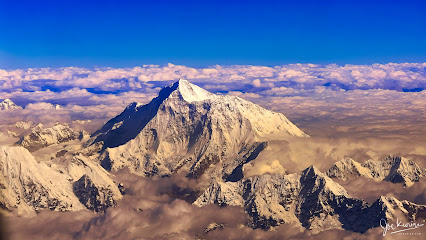
Gokyo Lake
Discover the serene beauty of Gokyo Lake, a stunning glacial lake in the Himalayas, offering breathtaking views and unforgettable trekking experiences.
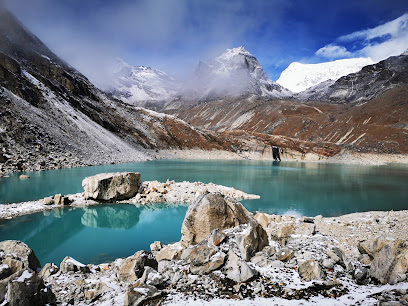
Kongma La Pass
Experience the breathtaking adventure of Kongma La Pass, a high-altitude trekking paradise in the heart of the Himalayas, surrounded by stunning landscapes.
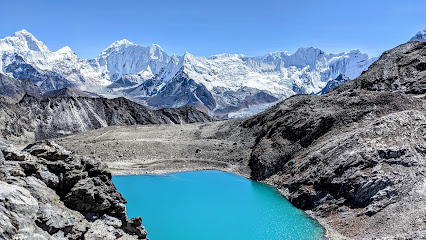
Khumbu Icefall Viewpoint
Experience the stunning views of the Khumbu Icefall from the iconic viewpoint, a must-visit destination for trekkers and nature lovers in the heart of the Himalayas.
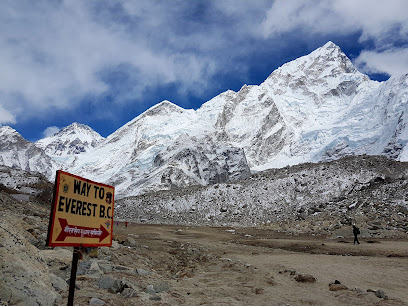
Shiva Dhara Barun Valley
Experience the tranquility and natural beauty of Shiva Dhara in Barun Valley, a serene park perfect for relaxation and exploration.

shiva dhara
Experience tranquility and spirituality at Shiva Dhara, a stunning Hindu temple nestled in nature's embrace, perfect for reflection and exploration.

shiva dhara
Discover the serenity of Shiva Dhara, a sacred Hindu temple nestled in the stunning landscapes of Makalu, a spiritual retreat in the heart of the Himalayas.
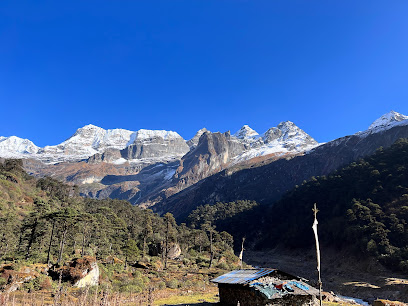
Gadi Bazar Hedangna
Explore the serene beauty of Gadi Bazar Hedangna, a charming cottage village offering a perfect blend of nature, culture, and local hospitality.

Kanchenjunga Base Camp Trek
Experience the majestic beauty of the Himalayas at Kanchenjunga Base Camp Trek, an unforgettable adventure for nature lovers and thrill-seekers.
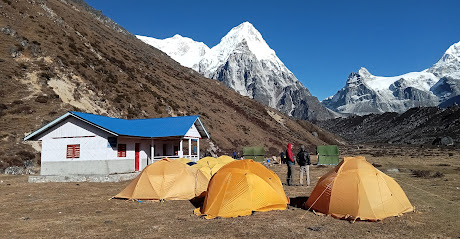
Makalu Base Camp ( Barun Valley )
Discover the breathtaking landscapes and exhilarating trekking adventures at Makalu Base Camp in the heart of Barun Valley, a true Himalayan gem.
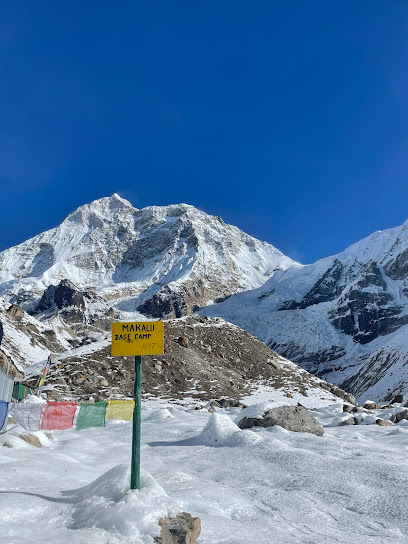
Essential places to dine
Roadhouse Cafe
Discover Roadhouse Cafe in Kathmandu: A delightful fusion of local charm and global flavors awaits with delicious wood-fired pizzas and more.
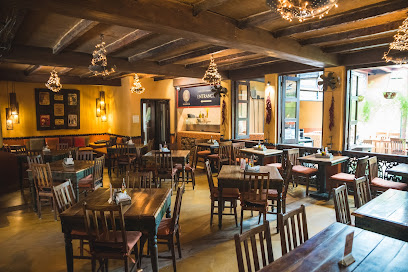
Kathmandu Grill Restaurant
Discover diverse flavors at Kathmandu Grill Restaurant in Thamel - where traditional meets contemporary dining in a vibrant atmosphere.

Le Sherpa Restaurant
Experience fine dining at Le Sherpa Restaurant in Kathmandu – where local flavors meet international cuisine in an elegant setting.
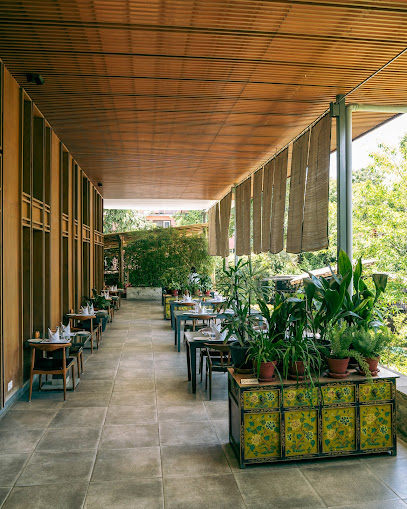
Forest & Plate
Discover Forest & Plate: A vibrant restaurant in Thamel offering fresh local cuisine and innovative dishes that reflect Nepal's rich culinary culture.
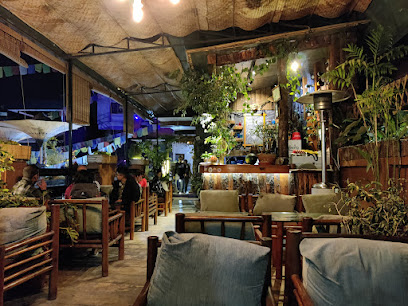
1905 Suites & Restaurant
Experience exquisite continental cuisine and warm hospitality at 1905 Suites & Restaurant in the heart of Kathmandu.
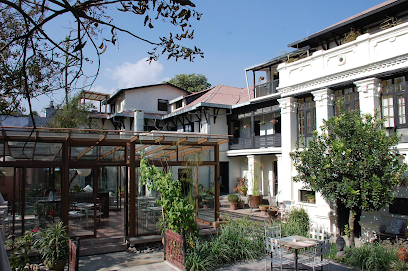
Monkey Temple Restro and Bar
Discover flavors at Monkey Temple Restro and Bar - a family-friendly restaurant with stunning views in Kathmandu's Swayambhu area.
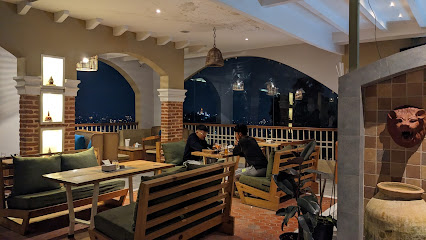
Newa MoMo Restaurant
Experience authentic Nepali momos in Thamel at Newa MoMo Restaurant - a family-friendly spot for traditional flavors and warm hospitality.
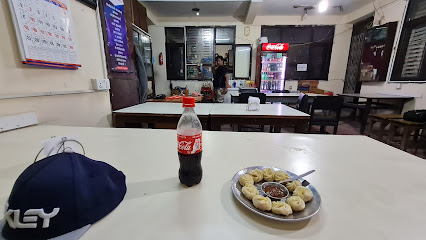
Nepalaya Rooftop Restaurant
Discover the flavors of Nepal at Nepalaya Rooftop Restaurant - a culinary oasis offering breathtaking views and exquisite dishes in Kathmandu.

Salon de Kathmandu Cafe & Bistro
Experience authentic flavors at Salon de Kathmandu Cafe & Bistro - where local cuisine meets international flair in a cozy setting.
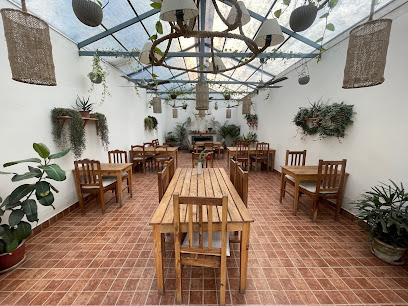
Hill Top Restaurant
Discover Hill Top Restaurant in Golghar, Benighat – where delicious fast food meets breathtaking views in a welcoming atmosphere.
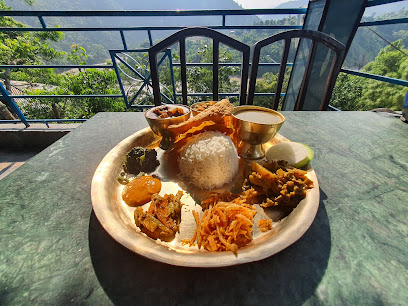
The Best Kathmandu Kitchen
Experience authentic Nepalese cuisine at The Best Kathmandu Kitchen in Thamel - where every meal is a flavorful journey into Himalayan culture.
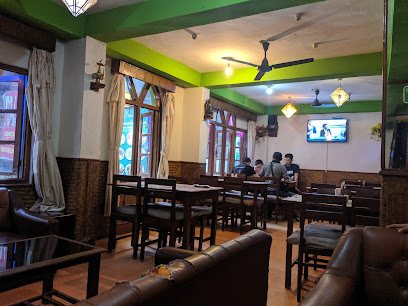
Revolution Cafe
Experience diverse culinary delights at Revolution Cafe in Kathmandu – where Asian fusion meets European cuisine amidst live music.
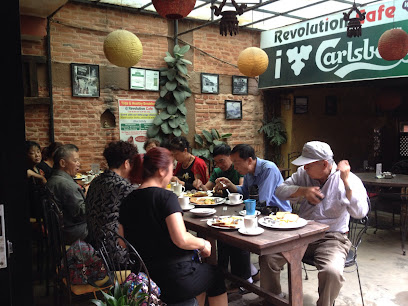
Samsara Garden
Discover tranquility at Samsara Garden in Kathmandu – where delicious cuisine meets serene garden views.

Graveaty Restaurant and Bar
Experience authentic Nepali cuisine blended with international flavors at Graveaty Restaurant and Bar in the heart of Kathmandu's Thamel district.
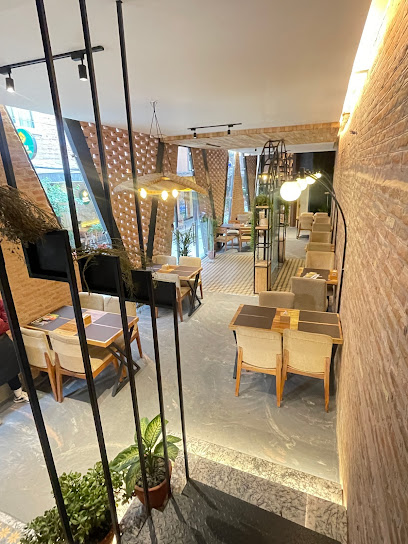
Green Organic Cafe
Experience fresh organic dining at Green Organic Cafe in Kathmandu's Thamel district - where sustainability meets deliciousness.
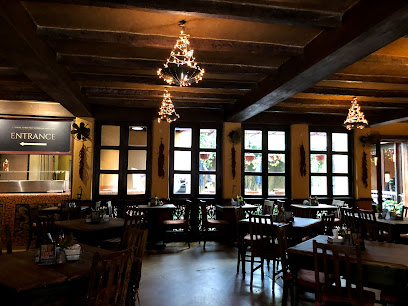
Markets, malls and hidden boutiques
Asan Bazar
Discover the bustling Asan Bazar in Kathmandu, a vibrant market where culture, tradition, and local delicacies await every traveler.

Bhrikuti Bazaar
Explore the bustling Bhrikuti Bazaar in Kathmandu, where vibrant local culture meets unique shopping experiences and delicious street food.
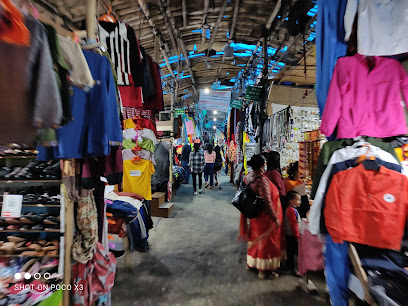
Goreto Gear Traders
Explore the outdoors with top-notch gear from Goreto Gear Traders, your premier outdoor sports store in Kathmandu's vibrant Thamel district.
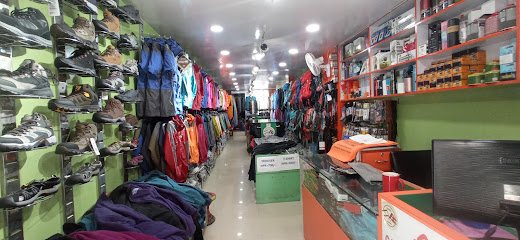
Makalu Barun National Park
Explore the untouched beauty of Makalu Barun National Park, where adventure meets tranquility in the heart of the Himalayas.
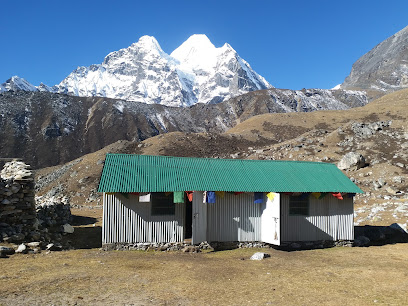
Green Valley Nepal Treks
Discover Nepal's breathtaking landscapes and rich culture with Green Valley Nepal Treks, your trusted partner for unforgettable adventures.

S.K. Handicrafts Export .FAIR TRADE Cashmere Company
Discover the finest cashmere clothing and accessories at S.K. Handicrafts Export in Kathmandu's Thamel district, where quality meets fair trade.
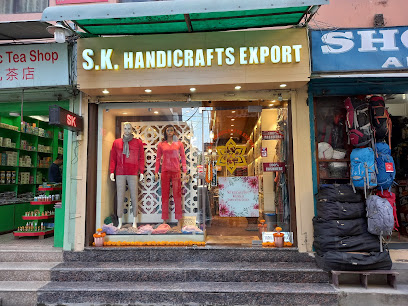
S.K. Handicrafts Export FAIR TRADE Cashmere Company
Explore the richness of Nepalese craftsmanship at S.K. Handicrafts, where fair trade meets exquisite cashmere apparel.
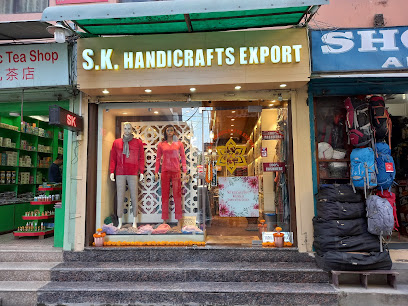
Shona's Alpine
Discover high-quality outdoor clothing and equipment at Shona's Alpine, your essential stop for Himalayan adventures in Kathmandu's Thamel district.
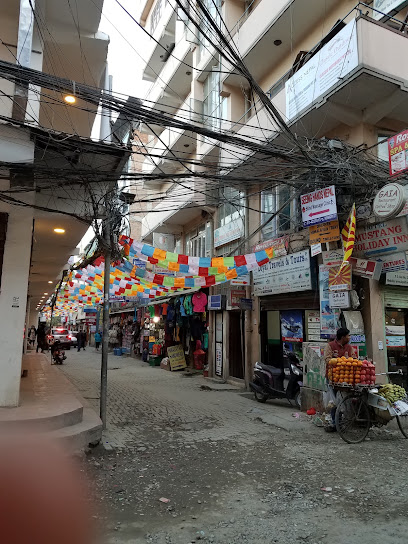
Dhukuti
Discover authentic Nepali craftsmanship at Dhukuti Shopping Mall, a vibrant destination for unique souvenirs and local delicacies in Lalitpur.
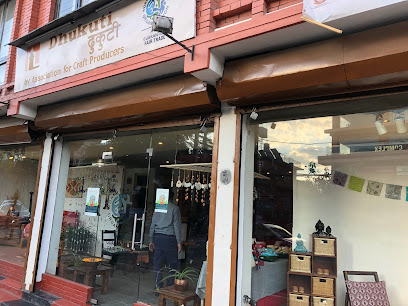
Gorkha Zone Khukuri House
Discover authentic Nepali Khukuris and unique souvenirs at Gorkha Zone Khukuri House in Kathmandu's vibrant Thamel district.
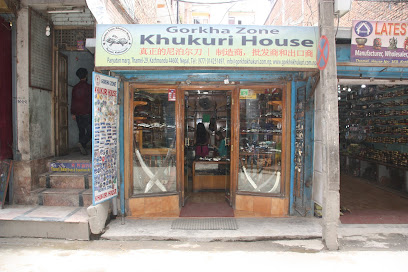
The Local Project Nepal
Discover the essence of Nepali craftsmanship at The Local Project Nepal, where every handcrafted piece tells a story.
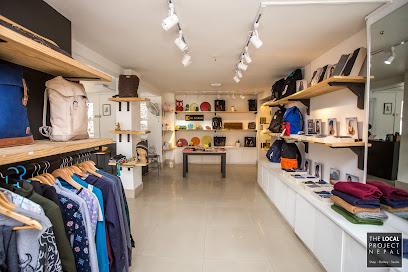
Friendly Export
Explore Friendly Export in the heart of Thamel for unique clothing that blends traditional Nepalese craftsmanship with modern style.
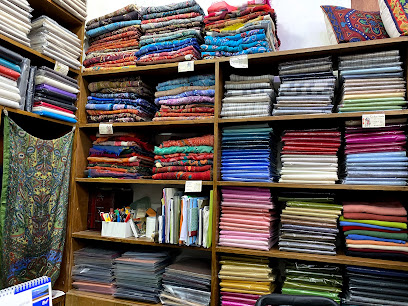
Makalu E-Traders | Trekking gears in Nepal
Discover quality trekking gear and expert advice at Makalu E-Traders, your go-to outdoor clothing shop in Kathmandu's Thamel district.
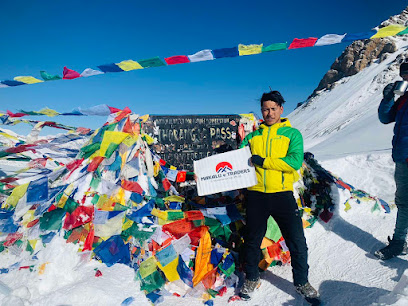
Makalu Adventure Pvt. Ltd
Explore the majestic landscapes of Nepal with Makalu Adventure Pvt. Ltd, your expert tour operator for thrilling trekking and rafting expeditions.
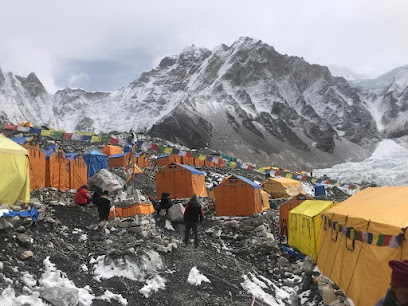
Himalayan Trekking Gear
Discover premium trekking gear in Kathmandu's Thamel district, where your Himalayan adventure begins with quality equipment and expert advice.

Essential bars & hidden hideouts
Kathmandu Grill Restaurant
Experience the rich flavors of Nepal and beyond at Kathmandu Grill Restaurant, a top dining destination in Thamel, Kathmandu.
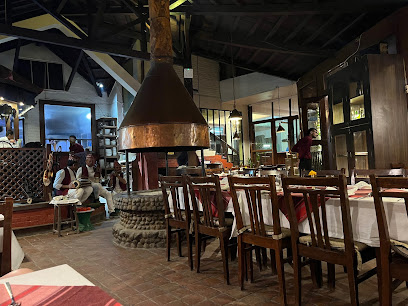
Sam's Bar
Discover the vibrant nightlife of Kathmandu at Sam's Bar, where eclectic drinks and a lively atmosphere await you.
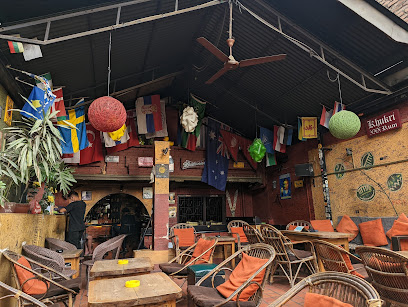
Senate Club
Discover the heart of Kathmandu's nightlife at Senate Club, where music, dance, and vibrant energy come together for an unforgettable experience.
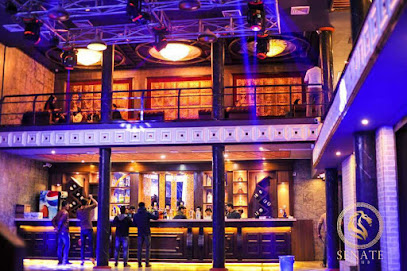
Nepalaya Rooftop Restaurant
Experience authentic Nepali cuisine with breathtaking views at Nepalaya Rooftop Restaurant in Kathmandu, the perfect dining spot for travelers.
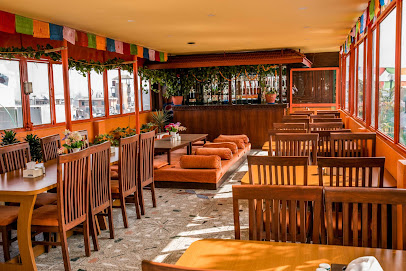
Oskar Bar & Grill
Discover the unique blend of local and international flavors at Oskar Bar & Grill, a must-visit dining spot in the heart of Kathmandu.
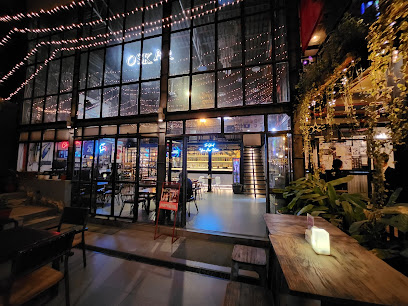
Cityscape Lounge and Bar
Discover the vibrant atmosphere of Cityscape Lounge and Bar in Kathmandu - a perfect blend of delicious food, refreshing drinks, and stunning city views.
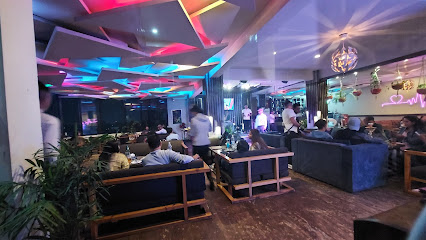
Graveaty Restaurant and Bar
Experience the vibrant flavors of Kathmandu at Graveaty Restaurant and Bar, where local delights meet international cuisine in a lively atmosphere.
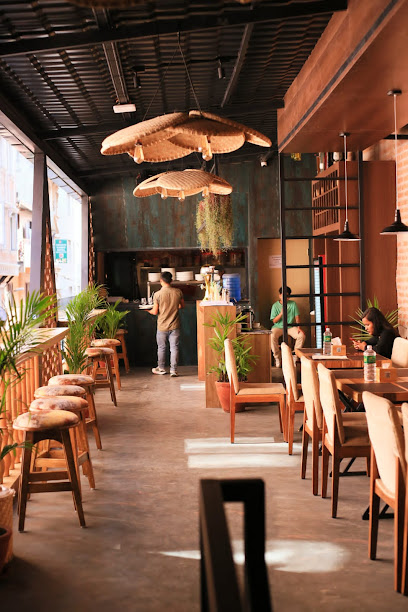
Makalu
Explore the breathtaking beauty and adventurous spirit of Makalu, the fifth highest mountain in the world, nestled in the majestic Himalayas.

Base Camp: Outdoor Lifestyle
Discover Base Camp: Outdoor Lifestyle, the ultimate bar for adventure seekers in Lalitpur, offering a vibrant atmosphere, craft drinks, and community spirit.
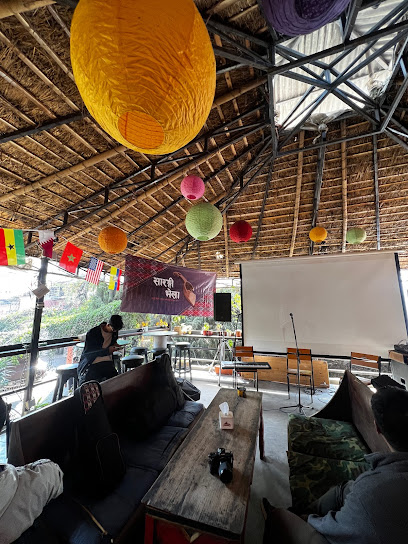
Fat Monk's Bar
Discover the lively nightlife of Kathmandu at Fat Monk's Bar, where the drinks flow and the atmosphere buzzes with energy.
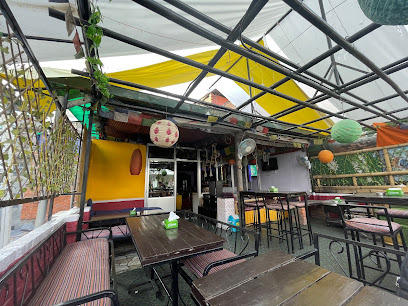
BlackBird
Discover BlackBird, a vibrant bar in Thamel, Kathmandu, offering a lively nightlife experience with delicious drinks and a welcoming atmosphere.

Trekkers Bar
Discover the vibrant atmosphere of Trekkers Bar in Kathmandu, where sports, local flavors, and travelers unite for an unforgettable experience.
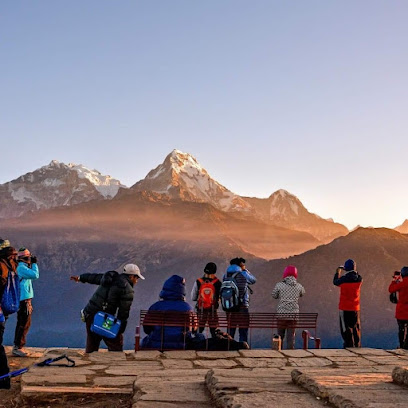
Jungle Lounge & Bar
Experience the vibrant nightlife of Kathmandu at Jungle Lounge & Bar, a tropical escape in the heart of Thamel.
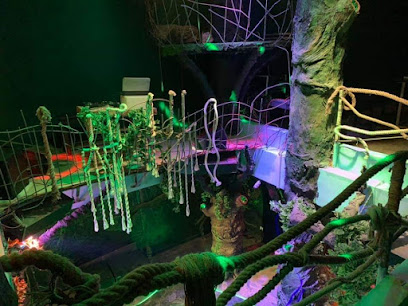
Khatra Bar
Experience the vibrant nightlife of Kathmandu at Khatra Bar, where eclectic drinks and a lively atmosphere await every traveler.

Club OMG
Discover the energetic nightlife at Club OMG in Kathmandu, where vibrant music, delicious drinks, and a lively crowd await you.
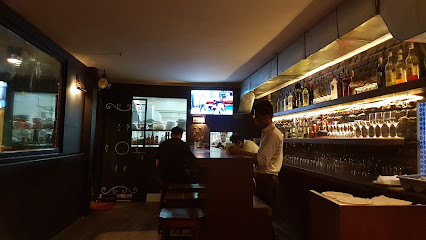
Local Phrases about Makalu Base Camp
-
- Helloनमस्ते
[namaste] - Goodbyeफेरी भेटौं
[feri bhetou] - Yesहो
[ho] - Noहैन
[haina] - Please/You're welcomeकृपया
[krupaya] - Thank youधन्यवाद
[dhanyabad] - Excuse me/Sorryमाफ गर्नुहोस्
[maaf garnuhos] - How are you?तपाईंलाई कस्तो छ?
[tapailai kasto chha?] - Fine. And you?ठिक छ। र तपाईंलाई?
[thik chha. ra tapailai?] - Do you speak English?तिमीले अंग्रेजी बोल्छौं?
[timile angreji bolchhau?] - I don't understandमैले सम्झिन
[maile samjhin]
- Helloनमस्ते
-
- I'd like to see the menu, pleaseकृपया मेनु हेर्न चाहन्छु
[krupaya menu hern chahanchu] - I don't eat meatम भांसामा खाँदिन
[ma bhansama khandin] - Cheers!चियर्स!
[chiyars!] - I would like to pay, pleaseकृपया तिर्न चाहन्छु
[krupaya tirn chahanchu]
- I'd like to see the menu, pleaseकृपया मेनु हेर्न चाहन्छु
-
- Help!मदत!
[madat!] - Go away!दूर जाओ!
[dur jao!] - Call the Police!प्रहरीलाई बोलाउनुहोस्!
[praharilai bolaunuhos!] - Call a doctor!डाक्टरलाई बोलाउनुहोस्!
[daktarlai bolaunuhos!] - I'm lostम गुमाएको छु
[ma gumaeko chu] - I'm illमलाई रोग लागेको छ
[malai rog lageko chha]
- Help!मदत!
-
- I'd like to buy...म खरीद गर्न चाहन्छु...
[ma kharid garn chahanchu...] - I'm just lookingम सिर्जना गर्न गएको छु
[ma sirjana garn gayeko chu] - How much is it?यो कति हो?
[yo kati ho?] - That's too expensiveयो धेरै महँगो छ
[yo dherai mahango chha] - Can you lower the price?के तपाईं मुल्य हाल्न सक्नु हुन्छ?
[ke tapain mulya haln saknu hunchha?]
- I'd like to buy...म खरीद गर्न चाहन्छु...
-
- What time is it?कति बजे हो?
[kati baje ho?] - It's one o'clockएक बजे भएको छ
[ek baje bhaeko chha] - Half past (10)दसबजे देखि आधा
[dasbaje dekhi aadha] - Morningबिहान
[bihan] - Afternoonदिउँसो
[diunso] - Eveningसाँझ
[sanh] - Yesterdayहिजो
[hijo] - Todayआज
[aaj] - Tomorrowभोलि
[bholi] - 1एक
[ek] - 2दुई
[dui] - 3तीन
[tin] - 4चार
[char] - 5पाँच
[pach] - 6छ
[chh] - 7सात
[sat] - 8आठ
[aath] - 9नौ
[nau] - 10दस
[das]
- What time is it?कति बजे हो?
-
- Where's a/the...?कहाँ छ...?
[kaha cha...?] - What's the address?ठेगाना के हो?
[thegana ke ho?] - Can you show me (on the map)?तपाईंले मलाई देखाउन सक्छिनु होला (नक्सामा)?
[tapainle malai dekhau sakinu hola (naksama)?] - When's the next (bus)?अर्को को हुन्छ?
[arko ko hunchha?] - A ticket (to ....)एक टिकट (.... मा)
[ek tikat (.... ma)]
- Where's a/the...?कहाँ छ...?
History of Makalu Base Camp
-
Makalu, the fifth-highest mountain in the world, was first surveyed in 1849 by the British Survey of India. However, it wasn't until the 1950s that Western climbers began to turn their attention to this remote peak. In 1954, an American team led by William Siri made the first serious attempt to climb Makalu, though they did not reach the summit.
-
The first successful ascent of Makalu was achieved on May 15, 1955, by a French expedition led by Jean Franco. The team, which included climbers Lionel Terray and Jean Couzy, opted for the northwest ridge route. Remarkably, the expedition saw multiple climbers reach the summit over successive days, a rare feat for its time.
-
In 1992, the Makalu-Barun National Park was established, encompassing an area of 1,500 square kilometers. This protected area is known for its unique biodiversity, ranging from tropical forests to alpine meadows, and is home to several endangered species, including the snow leopard and red panda. The establishment of the park marked a significant step in the conservation of the region's natural and cultural heritage.
-
Makalu Base Camp is not just a launching point for climbers but also a site of cultural importance. The region is inhabited by the Sherpa, Rai, and Lhomi people, who have lived in these high-altitude environments for centuries. Their rich traditions, including festivals, rituals, and daily practices, are deeply intertwined with the mountainous landscape.
-
In recent years, Makalu Base Camp has become a popular destination for trekkers and adventure enthusiasts. The trek to the base camp offers stunning views of Makalu and other Himalayan peaks, as well as a chance to experience the local culture and hospitality. Modern expeditions continue to challenge the peak, contributing to its legacy as one of the most formidable mountains in the world.
Makalu Base Camp Essentials
-
Makalu Base Camp is located in the eastern region of Nepal, and getting there involves multiple steps. The nearest major airport is Tribhuvan International Airport in Kathmandu. From Kathmandu, you can take a domestic flight to Tumlingtar Airport. Following the flight, a drive to Num village is required, which is the starting point of the trek to Makalu Base Camp. The trek usually takes about 8-10 days, passing through various villages and high-altitude terrains.
-
Transportation options are limited due to the remote nature of Makalu Base Camp. After reaching Tumlingtar Airport, local jeeps or buses can be hired to reach Num village. From Num, the journey is entirely on foot. Ensure you arrange transportation in advance, especially during peak trekking seasons. Porters and guides are also available for hire to assist with carrying luggage and navigating the trek.
-
The official currency in Nepal is the Nepalese Rupee (NPR). Credit cards are rarely accepted in rural areas and along the trekking route, so it is crucial to carry enough cash. ATMs are available in Kathmandu and a few larger towns en route, but it's advisable to withdraw sufficient cash before starting the trek. Local tea houses and lodges usually accept only cash.
-
Makalu Base Camp is generally safe for tourists, but standard precautions should be taken. The area has low crime rates, but petty theft can occur. Always keep your belongings secure and avoid trekking alone. Be aware of altitude sickness and acclimatize properly. There are no high-crime areas specifically targeting tourists, but staying vigilant and cautious is advised.
-
In case of an emergency, contact the nearest police station or medical facility. Emergency contact numbers in Nepal are 100 for police and 102 for ambulance services. It's essential to have comprehensive travel insurance that covers medical emergencies and helicopter evacuation, as the terrain is remote and medical facilities are limited. Carry a basic first aid kit and familiarize yourself with altitude sickness symptoms and remedies.
-
Fashion: Do dress in layers and wear comfortable trekking gear. Avoid wearing revealing clothing. Religion: Do respect local customs and traditions. Remove your shoes before entering temples and monasteries. Public Transport: Do be patient, as transport can be irregular. Don't expect luxury services. Greetings: Do greet locals with a 'Namaste' and a slight bow. Eating & Drinking: Do try local foods and accept hospitality graciously. Don't waste food, as it is considered disrespectful.
-
To experience Makalu Base Camp like a local, engage with the local Sherpa and Rai communities. Learn a few basic phrases in Nepali to communicate better. Visit local monasteries and participate in festivals if your timing allows. Carry reusable water bottles and purifying tablets to minimize plastic waste. Support local businesses by purchasing handicrafts and local produce. Always follow the Leave No Trace principles to preserve the natural beauty of the region.
Nearby Cities to Makalu Base Camp
-
Things To Do in Darjeeling
-
Things To Do in Nagarkot
-
Things To Do in Gangtok
-
Things To Do in Bhaktapur
-
Things To Do in Kathmandu
-
Things To Do in Patan
-
Things To Do in Siliguri
-
Things To Do in Paro
-
Things To Do in Gorkha
-
Things To Do in Phuentsholing
-
Things To Do in Thimphu
-
Things To Do in Bandipur
-
Things To Do in Chitwan
-
Things To Do in Punakha
-
Things To Do in Wangdue Phodrang









